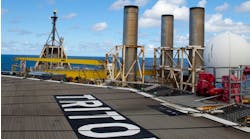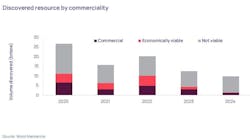Offshore staff
STAVANGER, Norway – Statoil and its partners in the Snøhvit license in the Norwegian Barents Sea are considering building a new LNG plant at Melkøya Island in Hammerfest (Train II).
The licencees have conducted a feasibility study into expanding processing capacity at the Hammerfest LNG plant, designated Snøhvit Train II, and have decided to review technical concepts that would make expansion economically feasible.
Expanding capacity expansion could help accelerate production of gas already found in the area, and facilitate earlier production of new gas yet to be discovered. Boosting capacity would also involve further development offshore, comprising new subsea templates, production wells and a new pipeline to land.
However, an investment decision looks unlikely before end-2013, which might allow the plant to come on line in 2018.
Archaeologists from Tromsø Museum have performed archaeological excavations in the Melkøya area over the past two years, Statoil adds, results of which which have led to the construction site being cleared for possible expansion.
The existing LNG plant handles supplies from Snøhvit, the first field development in the Barents Sea. Gas is transported to land through a 143-km (89-mi) pipeline for liquefaction at Hammerfest LNG.
Snøhvit is also the first major development on the Norwegian continental shelf in which all the production facilities are on the seabed at water depths of 250-345 m (820-1,132 ft).
Hammerfest LNG (Train I) currently produces 13,000 t/d of LNG, 2,000 t/d of condensate and 900 t/d of LPG.
Under the current plan for Train I, the facility will produce gas over a 30-year period from the Snøhvit, Askeladd, and Albatross fields.
Statoil’s partners are Petoro, GDF SUEZ, Total, Hess, and RWE Dea.
01/12/2011


